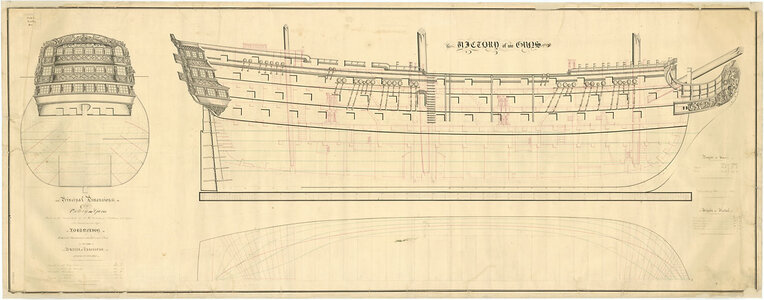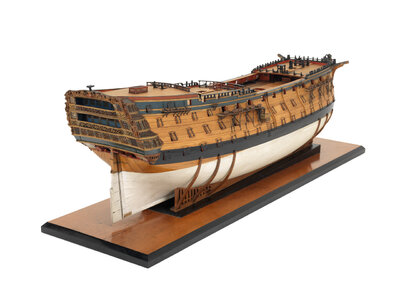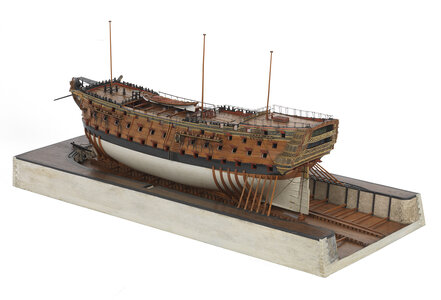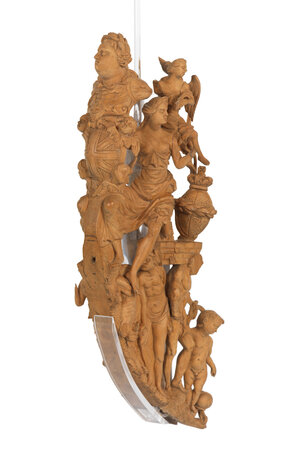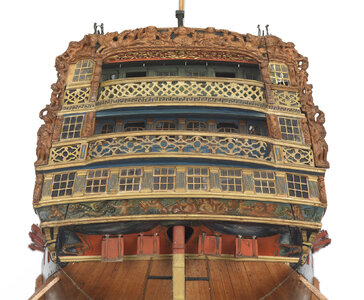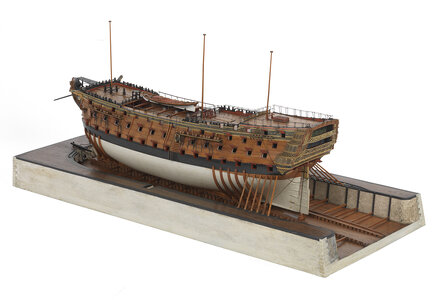- Joined
- Oct 31, 2020
- Messages
- 4
- Points
- 3
Hi
I'm planning a scratch build of HMS Victory as it was originally built - I'm looking at the stern galleries and I know they were closed in at a later date and in a number of books I'm seeing painting and models in the maritime museums supposedly showing how it was with the open stern..... I'm no expert but I think the historic models are wrong....
Why I'm questioning this is that the arrangement makes no sense - why put windows in at the sides which offer benefit given the structural frames run inside with just doors from the outer areas of the quarter galleries and it firstly blocks any light benefit and also creates an akward space between.......
Also when I look at the only surviving draught as built elevation, the sides and rear were enclosed at the middle deck level and open balconies at the upper and quarter deck level...but the bit that most people historically seem to have missed is that the windows at the stern are as current, but the balcony was beyond where the stern currently ends so it was a cantilevered overhanging balcony at the rear (ie the stern balcony must have been removed and the glazed doors out to this balcony changed to sash windows (as can also be seen on a painting from 1778....). My guess is that these overhanging balconies were removed to reduce weight given its early issues with depth from water line to first row of portholes...
So my question is - am I right and instead of the 8 no ships frames running upto the quarter deck as current off the lower and upper counter timber, the natural light would have been sacrificed at the middle deck level to allow the frames to run all the way through (ie pretty much as it is now) but there would only be 5 frames of the counter timbers so at the upper and quarter deck levels the 3 windows would sit inbetween these frames set back from their current position and thus have the open galleries at the upper and quarter deck as wrap around galleries (hope that made sense?)
I've been trying to get my head around this for a while and comparing Victory to other ship of the line from similar period so if anyone more knowledgable than I can advise I'd be most grateful..
I'm planning a scratch build of HMS Victory as it was originally built - I'm looking at the stern galleries and I know they were closed in at a later date and in a number of books I'm seeing painting and models in the maritime museums supposedly showing how it was with the open stern..... I'm no expert but I think the historic models are wrong....
Why I'm questioning this is that the arrangement makes no sense - why put windows in at the sides which offer benefit given the structural frames run inside with just doors from the outer areas of the quarter galleries and it firstly blocks any light benefit and also creates an akward space between.......
Also when I look at the only surviving draught as built elevation, the sides and rear were enclosed at the middle deck level and open balconies at the upper and quarter deck level...but the bit that most people historically seem to have missed is that the windows at the stern are as current, but the balcony was beyond where the stern currently ends so it was a cantilevered overhanging balcony at the rear (ie the stern balcony must have been removed and the glazed doors out to this balcony changed to sash windows (as can also be seen on a painting from 1778....). My guess is that these overhanging balconies were removed to reduce weight given its early issues with depth from water line to first row of portholes...
So my question is - am I right and instead of the 8 no ships frames running upto the quarter deck as current off the lower and upper counter timber, the natural light would have been sacrificed at the middle deck level to allow the frames to run all the way through (ie pretty much as it is now) but there would only be 5 frames of the counter timbers so at the upper and quarter deck levels the 3 windows would sit inbetween these frames set back from their current position and thus have the open galleries at the upper and quarter deck as wrap around galleries (hope that made sense?)
I've been trying to get my head around this for a while and comparing Victory to other ship of the line from similar period so if anyone more knowledgable than I can advise I'd be most grateful..


